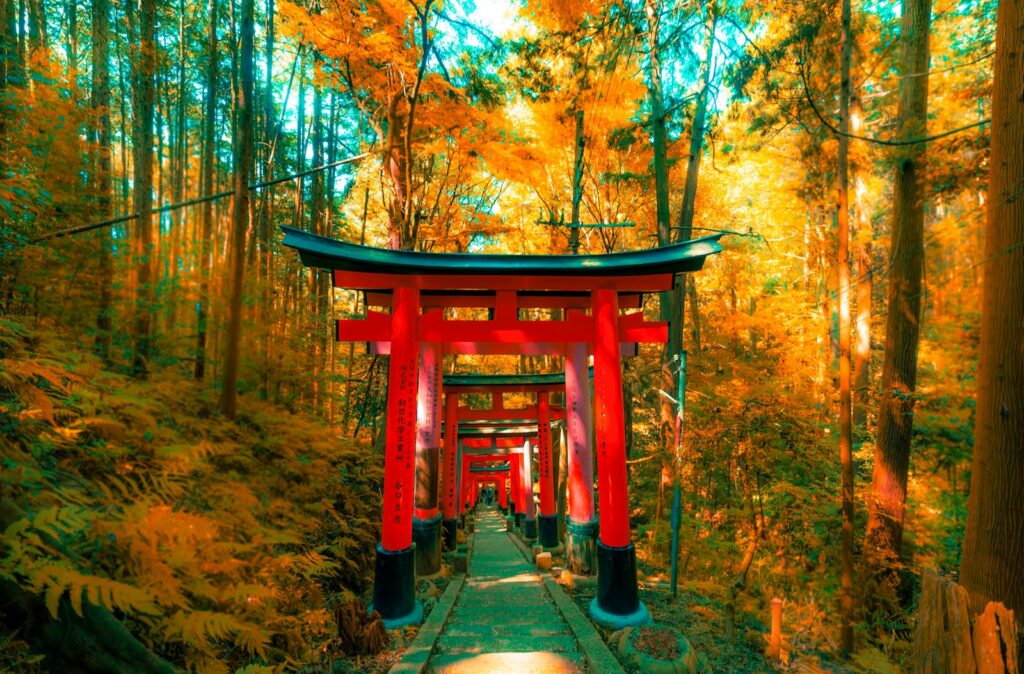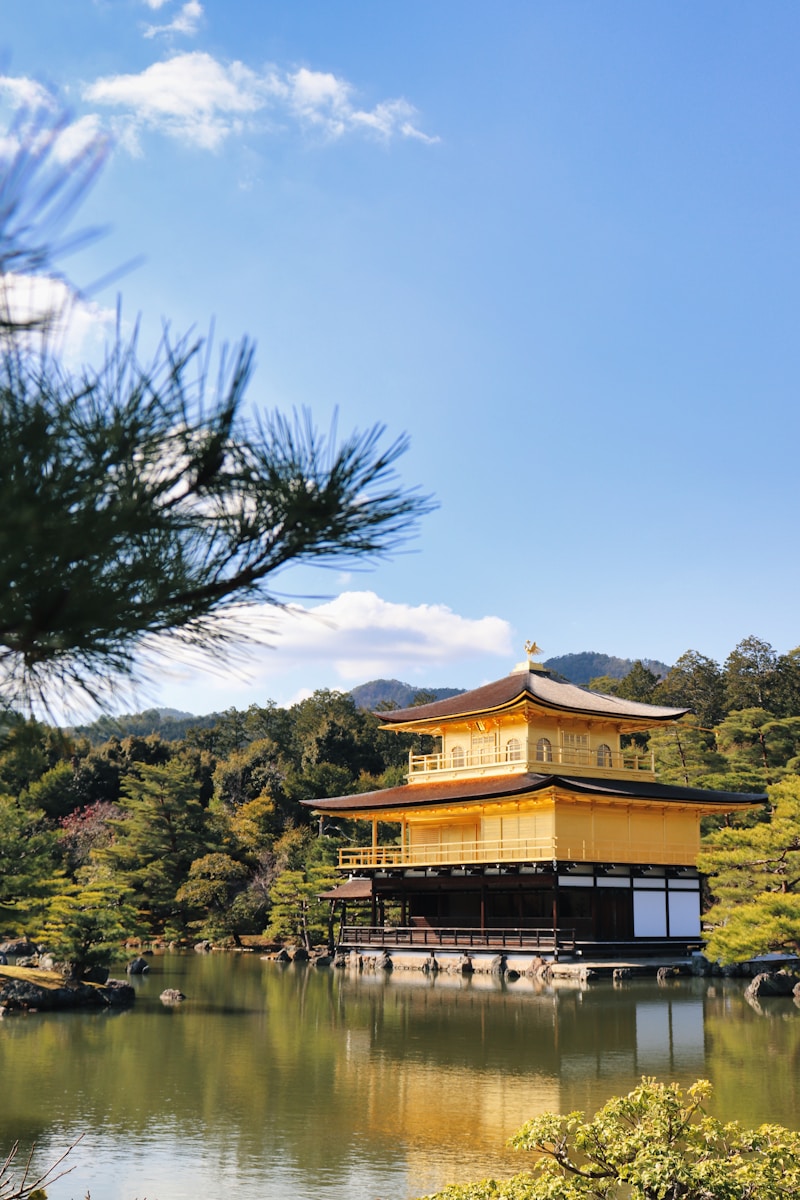Kyoto, with its rich cultural heritage, is renowned for its plethora of temples that stand as a testament to its historical and spiritual significance. While famous temples like Kinkaku-ji and Fushimi Inari-taisha draw throngs of visitors each year, the city is also home to numerous lesser-known temples in Kyoto that offer a more serene and intimate experience. These hidden gems provide a unique perspective on Kyoto’s spiritual landscape, allowing visitors to connect deeply with its cultural essence. My personal journey through Kyoto’s less-frequented sanctuaries has been one of discovery and reflection, revealing the profound beauty and tranquility that lies beyond the tourist trails.

Table of Contents
The Allure of Hidden Temples
The Charm of Secluded Sanctuaries
The secluded sanctuaries of Kyoto’s lesser-known temples offer a tranquil escape from the bustling crowds. Unlike the more famous sites, these temples provide a serene and solitary atmosphere, perfect for those seeking peace and reflection. Walking through these quiet grounds, one can truly appreciate the tranquil ambiance that allows for a deeper spiritual connection. The architectural beauty of these temples is equally captivating. Each structure showcases unique styles that reflect the historical and cultural evolution of Kyoto. From intricate wooden carvings to serene Zen gardens, the artistry and craftsmanship of these hidden gems are a testament to the city’s rich architectural heritage.
Historical Significance
The historical significance of Kyoto’s lesser-known temples adds to their allure. Many of these temples have ancient roots, with stories that span centuries. Exploring these sites provides a glimpse into the past, revealing the deep spiritual and cultural traditions that have shaped Kyoto. Efforts to preserve these temples are ongoing, ensuring that future generations can continue to experience their beauty and historical importance. Preservation initiatives often involve meticulous restoration work, highlighting the dedication to maintaining the authenticity and integrity of these sacred spaces.
Nanzen-ji Oku-no-in: A Hidden Treasure
Introduction to Nanzen-ji Oku-no-in
Nanzen-ji Oku-no-in is a hidden treasure nestled within the expansive grounds of the Nanzen-ji temple complex. Located away from the main temple, this secluded sanctuary is accessible via a serene forest path, offering visitors a peaceful retreat. The historical context of Nanzen-ji Oku-no-in adds to its mystique. Founded in the 13th century, the temple has played a significant role in the religious history of Kyoto, serving as a center for Zen Buddhist practice.
Highlights of Nanzen-ji Oku-no-in
The scenic beauty of Nanzen-ji Oku-no-in is one of its most enchanting features. Surrounded by lush greenery and tranquil water features, the temple offers a picturesque setting that changes with the seasons. Spring brings vibrant cherry blossoms, while autumn paints the landscape in hues of red and gold. The spiritual ambiance of the temple is palpable, providing a perfect setting for meditation and reflection. Personal reflections on visits to Nanzen-ji Oku-no-in often highlight the profound sense of peace and connection with nature experienced here.
Shinnyo-do Temple: A Quiet Retreat
Discovering Shinnyo-do
Shinnyo-do Temple, another hidden gem in Kyoto, offers a quiet retreat away from the city’s more crowded attractions. Founded in the 10th century, Shinnyo-do boasts a rich history and unique features that set it apart. The temple’s main hall is home to a stunning collection of religious artifacts and artwork, providing a glimpse into the artistic heritage of the period. Visitors to Shinnyo-do can expect a serene and contemplative experience, with fewer crowds allowing for a more personal connection with the temple’s spiritual essence.
Points of Interest
The main hall of Shinnyo-do is a highlight, with its impressive architectural details and exquisite artwork. The hall houses statues and paintings that depict important figures and scenes from Buddhist teachings, each piece rich in symbolism and history. The temple gardens are equally enchanting, offering a peaceful setting for contemplation. Designed with meticulous care, the gardens feature a variety of plants and seasonal flowers, creating a serene environment that enhances the overall spiritual experience.
Komyo-in Temple: The Hidden Zen Garden
Introduction to Komyo-in
Komyo-in Temple, known for its hidden Zen garden, offers a tranquil escape within Kyoto. Founded in the 14th century, Komyo-in has a rich history and a reputation for its serene garden design. The temple’s location is easily accessible, yet it remains a peaceful haven away from the more popular tourist spots. Visitors can enjoy the beauty of the Zen garden, which is designed to promote meditation and reflection, embodying the principles of Zen Buddhism.
Exploring Komyo-in
The Zen garden at Komyo-in is a masterpiece of design and symbolism. Every element, from the meticulously raked gravel to the carefully placed rocks and plants, is intended to evoke a sense of harmony and tranquility. The garden serves as a space for meditation, inviting visitors to pause and reflect amidst its serene beauty. Meditation spaces within the temple provide further opportunities for introspection, with designated areas designed to enhance the meditative experience.
Myoshin-ji: A Temple Complex with Hidden Charms
Overview of Myoshin-ji
Myoshin-ji is a sprawling temple complex that offers a blend of historical significance and hidden charms. Established in the 14th century, Myoshin-ji is one of Kyoto’s largest temple complexes, with numerous sub-temples and gardens. Navigating the complex can be an adventure in itself, with each sub-temple offering unique features and historical insights. Maps and guides are available to help visitors explore the key areas and discover the hidden gems within the complex.
Notable Sub-Temples
Taizo-in, one of the notable sub-temples within Myoshin-ji, is renowned for its stunning garden and historical artifacts. The garden, designed in the Zen style, offers a serene setting for contemplation. Another sub-temple, Reiun-in, features unique architectural elements and a rich history. Visitor tips for exploring these sub-temples include taking time to appreciate the intricate details and understanding the historical context of each site.
Honen-in: A Temple of Enlightenment
Exploring Honen-in
Honen-in, a lesser-known temple dedicated to the founder of the Jodo sect of Buddhism, offers a journey of enlightenment. The entrance path to Honen-in is a sensory delight, with moss-covered steps and a canopy of trees creating a mystical atmosphere. The temple art, including carvings and paintings, depicts important figures and teachings of the Jodo sect, providing a rich cultural experience for visitors.
Seasonal Beauty
Honen-in is particularly known for its seasonal beauty. In spring, cherry blossoms adorn the temple grounds, creating a breathtaking scene. In autumn, the temple is surrounded by vibrant foliage, offering a stunning backdrop for reflection. Special events and ceremonies are held throughout the year, providing unique opportunities to experience the temple’s cultural and spiritual significance.
Yoshimine-dera: Kyoto’s Best-Kept Secret
Getting to Yoshimine-dera
Yoshimine-dera, often considered Kyoto’s best-kept secret, is a hidden gem that offers breathtaking views and historical depth. Located on the western outskirts of Kyoto, the temple is accessible via a scenic route that winds through picturesque landscapes. Practical tips for visitors include planning the journey to enjoy the scenic beauty and ensuring comfortable footwear for the walk.
Temple Highlights
The panoramic views from Yoshimine-dera are a highlight, offering stunning vistas of Kyoto and the surrounding mountains. Photography tips for capturing these views include visiting during the golden hours of sunrise and sunset. The temple is also home to numerous historical artifacts, each with its own story and significance. These artifacts provide a tangible connection to the past and enhance the overall experience of visiting Yoshimine-dera.
Personal Reflections on Kyoto’s Hidden Temples
Personal Connection
My personal connection to Kyoto’s hidden temples has deepened with each visit. Each temple offers unique experiences and insights, from the tranquil beauty of their gardens to the rich historical narratives they preserve. Personal anecdotes and experiences at these temples highlight the importance of preserving these hidden gems and appreciating their cultural and spiritual value.
Encouraging Exploration
For travelers seeking to discover lesser-known sites in Kyoto, my advice is to venture beyond the popular tourist trails and explore the hidden sanctuaries. These temples offer a more intimate and authentic experience, allowing for a deeper connection with Kyoto’s cultural heritage. Concluding reflections emphasize the value of exploring beyond the well-trodden paths and encourage readers to share their own discoveries and experiences.
Lesser-Known Temples In Kyoto Conclusion
Kyoto’s hidden temples offer unique qualities that enrich the overall experience of visiting this historical city. Each temple discussed in this article provides a different perspective on Kyoto’s spiritual landscape, highlighting the charm and significance of these lesser-known sites. I encourage visitors to explore these temples for a deeper and more intimate understanding of Kyoto. Sharing experiences and discoveries with others can further enhance the appreciation of these hidden gems and contribute to their preservation for future generations.

